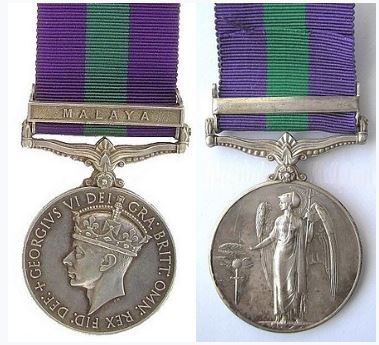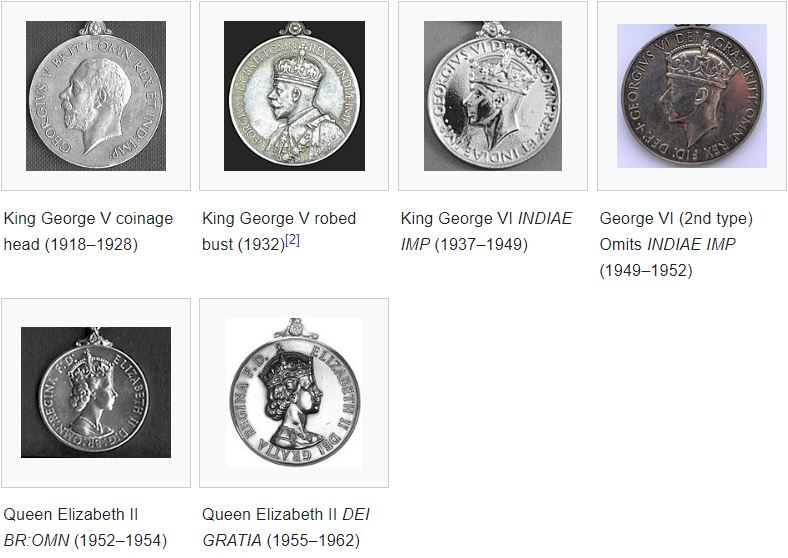Difference between revisions of "General Service Medal 1918-1962"
From Our Contribution
(→Description) |
|||
| Line 19: | Line 19: | ||
==Description== | ==Description== | ||
The medal is cupro-nickel medal with the obverse having the effigy of the reigning sovereign at time of issue. | The medal is cupro-nickel medal with the obverse having the effigy of the reigning sovereign at time of issue. | ||
| + | |||
| + | |||
[[File: Obverse images.jpg]] | [[File: Obverse images.jpg]] | ||
Revision as of 19:02, 27 August 2020
 |
Eligibility
The General Service Medal 1918-62 was instituted in 1923 as a general service medal to be awarded for minor conflicts for which no other specific campaign medal was awarded. It was always awarded with a clasp indicating the area for which the medal was awarded. Subsequent service is recognised by the award of further clasps to be worn on the original medal.
Description
The medal is cupro-nickel medal with the obverse having the effigy of the reigning sovereign at time of issue.
The reverse bears a figure of Victory with a trident in her left hand and a wreath in her right. Directly below the wreath is a winged sun above a sword, vertically aligned with the tip pointing towards the base of the medal.
The ribbon is purple with a central dark green stripe.
Clasps
- S. Persia
- Kurdistan - This clasp was awarded for the following:
At Kirkuk or north of a line east and west through Kirkurk between 23 May and 31 July 1919. At Dohok or north of a line east and west through Dohok between 14 July and 7 October 1919. North of the advanced bases near Akra and Amadia between 7 November and 6 December 1919.
- Iraq
- N.W. Persia
- Southern Desert, Iraq
- Northern Kurdistan
- Palestine
- Bomb and Mine Clearance 1945-49
- Palestine 1945-48
- Bomb and Mine Clearance 1945-56
- Malaya
- S.E. Asia 1945-46
- Cyprus
- Near East
- Arabian Peninsula
- Brunei
